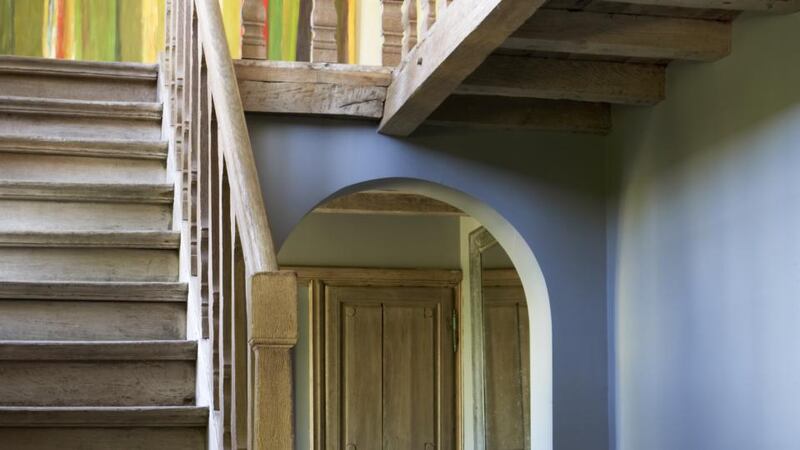For a small country, Belgium has contributed more than its fair share of household names to the design world, from Axel Vervoordt and Vincent Van Duysen, some of Antwerp's ablest ambassadors to the antiques hub of its capital, Brussels. Flamant is another Belgian brand that is beloved by homeowners. Stocked in more than 500 shops worldwide, including the Orchard garden centre in Celbridge, Co Kildare, it is headed up by Alex Flamant, a man you could say was born into the furniture business.
His father was an antiques dealer in the town of Geyersberg, about 35km south of Brussels, in the heart of country's Dutch-speaking Flanders region.
When you think of design destinations Belgium doesn't exactly trip off the tongue in the way Denmark, Italy or France do, and yet, along with its neighbours, it has had centuries to establish merchant and middle classes who fuelled a demand in status-denoting items for the home.
"Situated at the crossroads of old Europe it has been invaded by so many countries that its influences come from Sweden to the north and France and Spain to the south," says Flamant.
Decluttering
During his formative years he was dragged around markets, taken to antique dealers to discover, appraise and bargain down buys, and to treasure-hunt at vide greniers, a traditional attic declutter that happens about once a month all across the country and where you can happen on all sorts of wonderful finds. All this helped hone his eye, something he has made much use of at Flamant.

Growing up, he was surrounded with classical furniture from the 18th and 17th centuries. There wasn’t a hint of modernity, he recalls. When his father died young, Flamant was expected to pick up the reins, as he was the eldest brother.
From this immersion grew Flamant the interior and home-decoration brand, which translates as "the Flemish man" and now sells everything from fashionable paint colours, new for 2017, to stylish furniture and accessories that you can mix and match to make your own.
His home, a former stud farm in the Flemish Ardennes, in the heart of rich countryside, has become a laboratory of new ideas. Many of the tables and chairs that are now integral parts of Flamant's collections were first designed for his redbrick home, a building that dates from the 18th century.

For work he has globetrotted across the Middle to the Far East and the Americas. Travelling as many as 60 days a year, he is just back from Singapore and Malaysia, having secured new manufacturing artisans in these Asian territories, and has also added Poland, Romania and the Ukraine to his list of suppliers.
The house, where he has been installed for more than 20 years, contains souvenirs from his extensive travels. In the living room there are wooden bowls from Indonesia, chandeliers in silver and bronze, a white marble Ganesh, jade from China and a wood turning from Ireland. This design has become part of the collection and is now called the Manor table.

The coffee table in the room is also notable. More than two metres long, it was designed by Flamant for the room and then added to the firm’s architectural line. “Rather than being shiny and new it looks like it always existed,” he says.
Oak beams
The house has plenty of original features, including oak beams that were originally dark and traditional. He spent a year of weekends stripping them back to the bare wood. In some rooms, including the sitting room, the beams are painted in one of Flamant’s new paint colours, After Rain, a soft, sludgy shade inspired by nature.
The house has also been used for several shoots for the firm’s catalogue but Flamant is not precious about how it looks: “It’s not a home for showing off but where you feel good with your family, friends, cats and dogs. It’s relaxed, a bit like our design approach. An over-relaxed dining chair is never comfortable for visitors, for example. For it to keep guests at the table it has to be a compromise between relaxed and formal.”

His two children are now grown up. Aged 28 and 30 they have different aspirations to what he wanted at their ages. “My parents suffered during the war and my generation were big consumers. My kids are less consumer-driven. They care more about how a product is made, its sustainability.”
This has been factored into the way the firm manufactures, with some pieces being limited to just 24 units. The company also uses recycled wood and driftwood – materials that have become part of its handwriting – a new range of coffee tables is made from reclaimed wood, for example.
Tableware is another way to buy into the brand and this season there is a collection of textured ceramic dining plates inspired by the Belgian linen that is used to cover the company’s armchairs and sofas. A range of flatware with sustainable bamboo handles is another way to make your dinner table stand out from the crowd.

One of the company’s best-known pieces is its trestle table, Linus. It has become a signature style, Flamant says. “It was a piece that was found in a barn originally and when we first made it we used chrome as the base and gave it a glass top. This season it’s being done in leather, which gives it a completely different feel.”
[ Flamant.comOpens in new window ]
Alex Flamant and his team will be hosting an event atthe Orchard,in Celbridge, Co Kildare, in May. To request an invitation, please register at flamant@theorchard.ie or call the Orchard on 01-6288903













